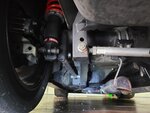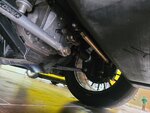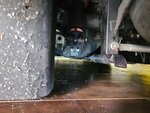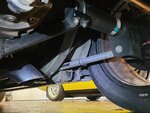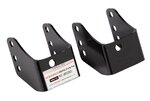Ron McCall
Pantera1889
Hello,
I am curious as to what people's real life experience is with the angle of the rear lower control arm is. I have a ,new to me , SN 95 race car that has a Cortex SLA ,Cortex Watts link , MM torque arm and I run Dunlop slicks.
The front of the car is pretty amazing. The turn in is excellent , it is very predictable and never has even the slightest amount of push. The rear ,however, is a different story. It feels loose at turn in ,decent through the middle of the turn and is loose on exit. I never get that confident feeling from the rear. I have made a few adjustments ( lowered the watts, lowered the rear of the car and played with tire pressure) these changes seemed to help but only slightly . To me , the rear of the car still seems a bit higher than it should be so I had planned to lower it a bit more and see what it does. That's when I noticed that the lower arm is already lower in the front than the rear and lowering the car would only make that worse. I know , from my drag racing days that lowering the rear of the lower bar helped traction quite a bit . I was curious what effect it would have in a road race setting?
Anyone have first hand experience with this in a Fox or SN95?
Thanks,
Ron
I am curious as to what people's real life experience is with the angle of the rear lower control arm is. I have a ,new to me , SN 95 race car that has a Cortex SLA ,Cortex Watts link , MM torque arm and I run Dunlop slicks.
The front of the car is pretty amazing. The turn in is excellent , it is very predictable and never has even the slightest amount of push. The rear ,however, is a different story. It feels loose at turn in ,decent through the middle of the turn and is loose on exit. I never get that confident feeling from the rear. I have made a few adjustments ( lowered the watts, lowered the rear of the car and played with tire pressure) these changes seemed to help but only slightly . To me , the rear of the car still seems a bit higher than it should be so I had planned to lower it a bit more and see what it does. That's when I noticed that the lower arm is already lower in the front than the rear and lowering the car would only make that worse. I know , from my drag racing days that lowering the rear of the lower bar helped traction quite a bit . I was curious what effect it would have in a road race setting?
Anyone have first hand experience with this in a Fox or SN95?
Thanks,
Ron
